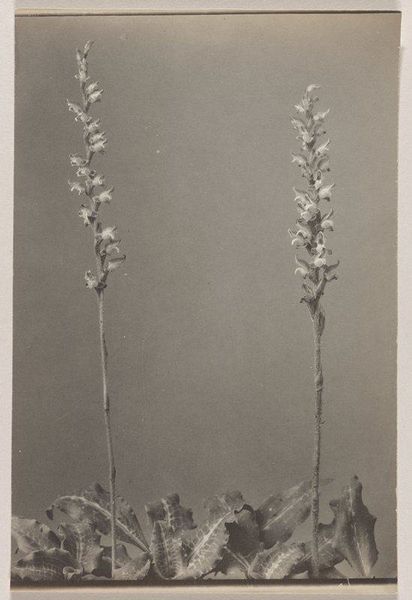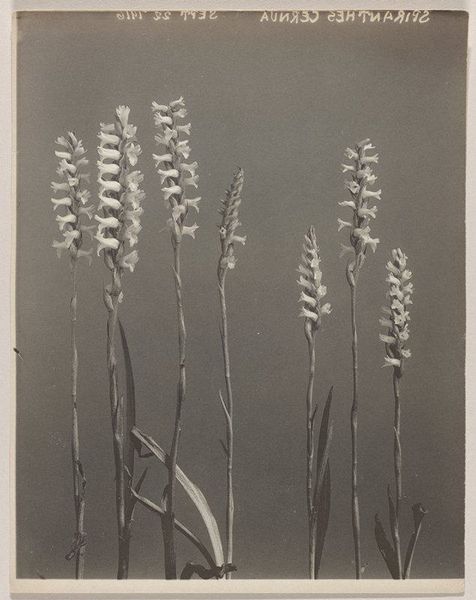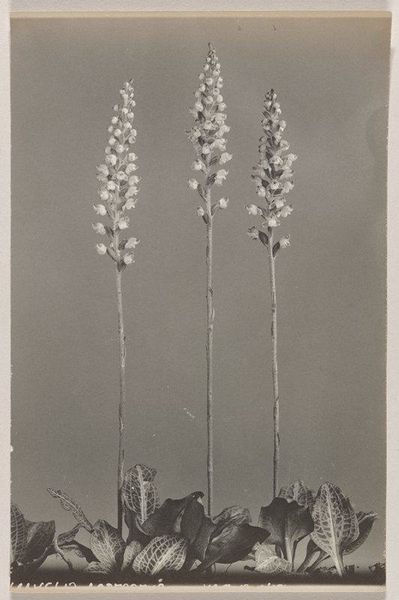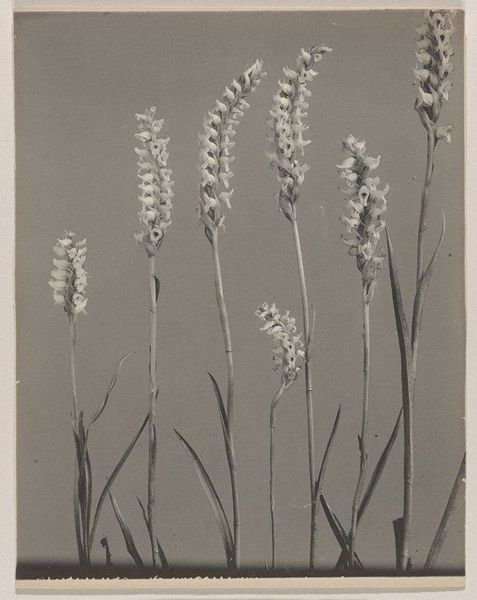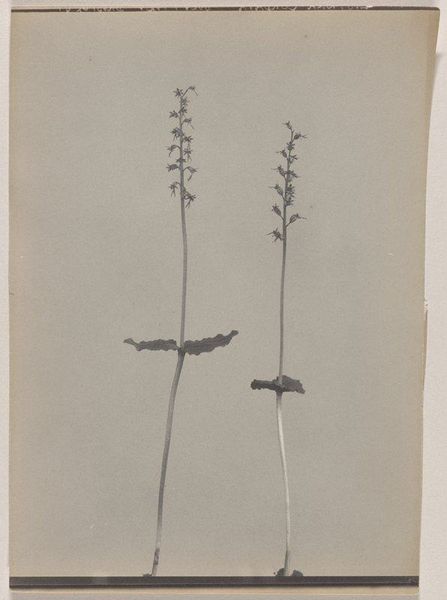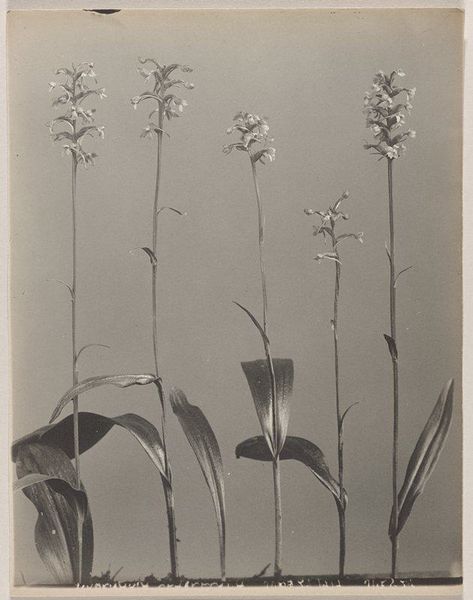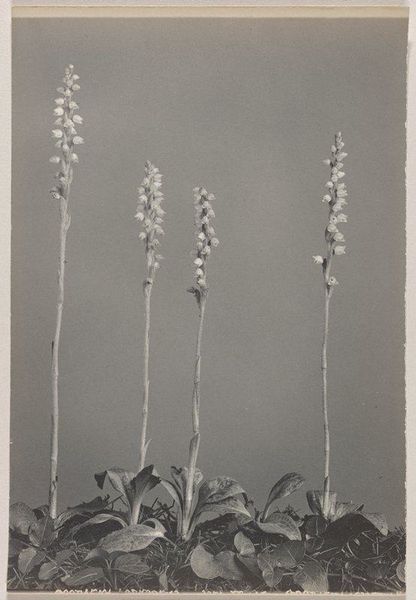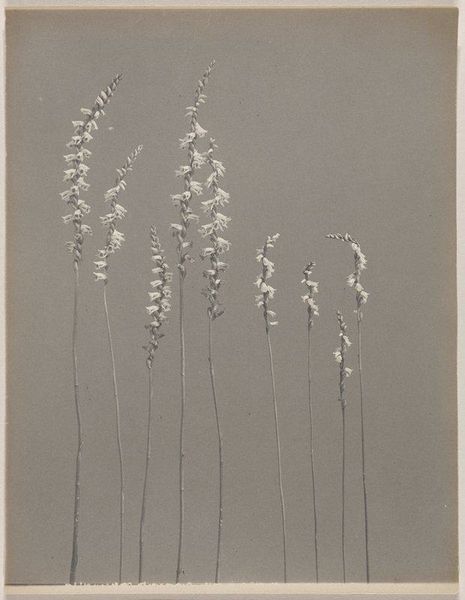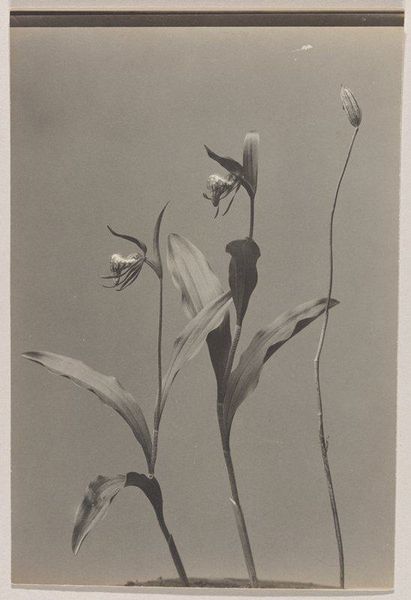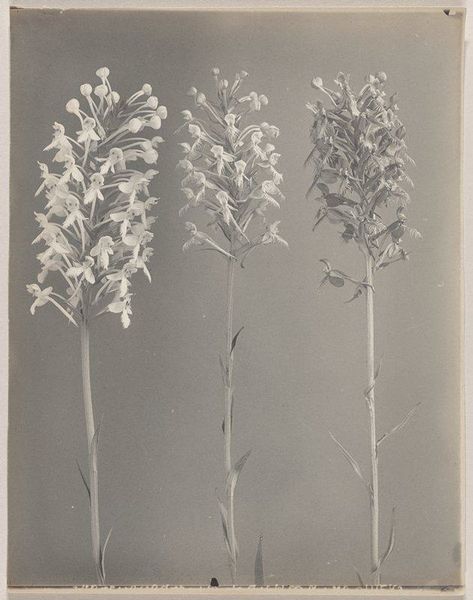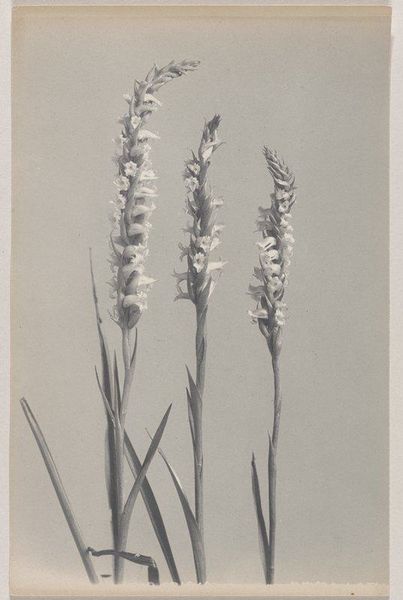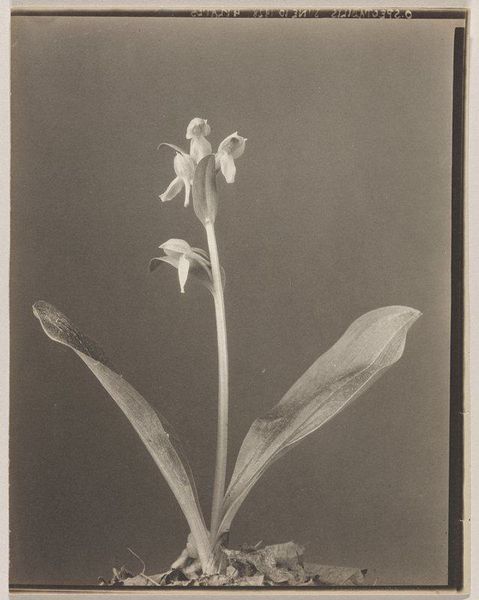
photography, gelatin-silver-print
#
still-life-photography
#
landscape
#
photography
#
gelatin-silver-print
#
united-states
Dimensions: 9 5/8 x 6 9/16 in. (24.45 x 16.67 cm) (image)9 15/16 x 6 9/16 in. (25.24 x 16.67 cm) (sheet)
Copyright: No Copyright - United States
Curator: Standing before us is Edwin Hale Lincoln’s 1931 gelatin silver print, "Spiranthes ovalis- Oval Ladies' Tresses," currently held at the Minneapolis Institute of Art. It’s a fascinatingly detailed depiction of wildflowers. Editor: My initial impression is one of stark simplicity and delicate balance. The grayscale tones evoke a sense of stillness. It feels like a hushed observation, highlighting the material grace of the plant specimens themselves. Curator: Precisely! Lincoln, emerging during a period of burgeoning environmental awareness, seems to be advocating for a recognition of the intricate beauty inherent within often-overlooked natural forms. Consider how the choice of isolating these particular flowers serves as a broader commentary, highlighting biodiversity during a time of significant industrial expansion. Editor: I agree, there's something incredibly compelling in the isolation he’s achieved. We have to acknowledge his mastery over the gelatin silver process here. The way light plays across the surface of each leaf and bud underscores the inherent textures and delicate form. Each plane appears to emphasize a deliberate labor and focused study, revealing so much in its crafting and materiality. Curator: And there is that labor of representation, isn't there? How might we understand his emphasis on the oval ladies' tresses as representative of fragility and resilience? In what ways does this mirror the sociopolitical dynamics present in early 20th-century American society, and our increasingly fraught relationship with the natural world, particularly given growing urbanization? Editor: Thinking about that era and the sheer amount of skill and careful labor required... this image serves as both documentation of the specimens and a study in craft. The sharp details suggest long exposure times and meticulous darkroom work. We have an intimate encounter, yes, with both the flowers, and photographic processes available. Curator: The ability to frame and reframe how we see nature... this speaks to the inherent agency embedded within artistic production itself, and I love how this photograph invites the audience to critically question what and how we perceive as art versus ecological study. Editor: Absolutely, and reflecting on that relationship, this careful print acts almost like a time capsule. Looking at this, I now have a greater respect for the medium, and the objects shown. Curator: For me, viewing this today creates renewed inspiration for cultivating mindful engagement with overlooked entities. It also urges us to embrace critical thought in how we address ongoing ecological justice!
Comments
No comments
Be the first to comment and join the conversation on the ultimate creative platform.
